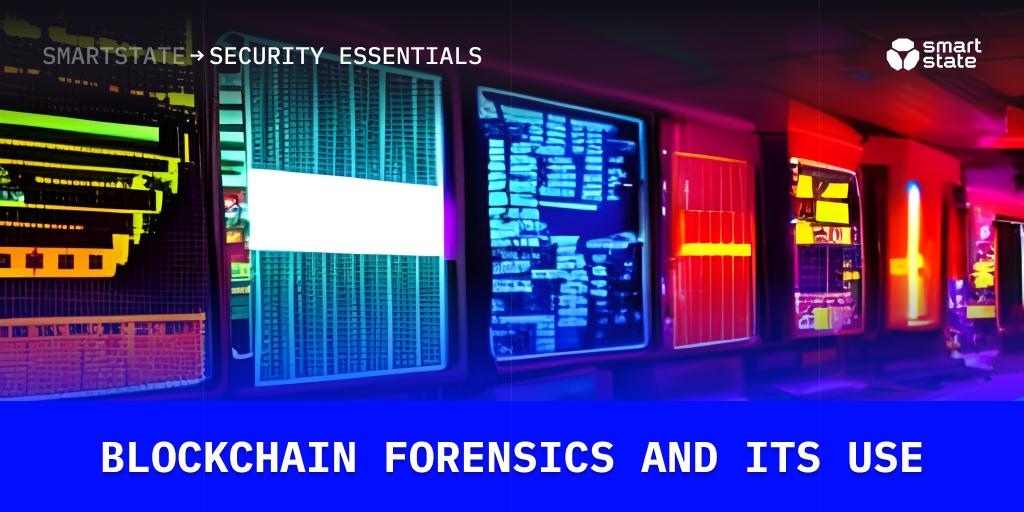Blockchain forensics and its use
Blockchain forensics is a set of practices of using blockchain tools and techniques to analyze data, find, trace and prevent criminal activities on a blockchain (such as fraud, money laundering, illegal transactions, etc.). Using specialized tools and procedures it helps to extract and analyze data (transaction data, addresses, etc.) and discover criminal groups or individuals involved in illegal activity. The field of blockchain forensics is expanding rapidly since a lot of people, companies and authorities are interested in bringing down the burden of financial crime, and willingly invest in creation of related tools and accumulating knowledge. The technology seems uncompromisingly effective and may become the main tool in fighting this type of crime.
Investigation of financial crimes is one of the main goals of blockchain forensics (if not the first and foremost). Experts help to find individuals and groups engaged in criminal activities by careful study of blockchain data and boosting the overall security of the blockchain ecosystem in question. Blockchain forensics helps to prevent the use of a blockchain for criminal operations, to spot and trace criminal activity, and to maintain trust in the blockchain as a highly secure and reliable platform for financial operations. Blockchain forensics can also help to perform risk management (for example, to reduce risks concerning money laundering, fraud or theft) by finding patterns and connections between transactions and addresses. Blockchain forensics also provides tools to track funds flows and assets on a blockchain, which helps to ensure that individuals or groups stand up to standards.
The process
During their investigation, the experts have to find out illicit activity and invest their effort in defeating financial criminals. The blockchain forensic investigation process typically involves several common stages. The full list of stages can, however, change depending on a particular case or data type in question.
- Gathering data. The first step involves collecting all data related to the investigation, such as block data, transaction data, addresses and so on.
- Analyzing data. One of the most vital stages. Many techniques (such as address clustering, transaction graph analysis, machine learning, etc.) are used here for careful data examination. They help to look into the collected data more thoroughly, monitor links between transactions and addresses, and also trace individuals and criminal groups involved in illegal activities.
- Result visualization. Visualization is a simple and efficient method for investigators to see the results of data analysis with the help of various charts, diagrams, graphs and other visual tools.
- Evidence presentation. By this stage the process of analysis and the main part of the investigation are completed. Now comes the time to bring together the evidence collected during previous stages and make a presentation suitable for legal procedures and institutions (such as court). It usually includes reports, experts’ testimonies, slideshows, evidence display, etc.
- Closure. The closing stage of the investigation is the point between ‘tracing’ and ‘taking action’. According to experts’ reports and findings the course of action is chosen, what to do next: addressing the court, finding a way of getting back stolen assets and other property and, naturally, taking measures to prevent future crime.
Analysis techniques
There are various methods and techniques which help investigators in their hard work, and many new ones are about to come. They are chosen in relation to a particular case specifics. Combining resources and strategies, forensic specialists are looking into criminal activity on a blockchain, study and seek to understand it and find ways to fight it down and prevent future crimes. Here are some of the most popular blockchain forensic techniques:
- Network analysis. Transactions can not pass without nodes. Unfortunately, some of them can be involved in illicit activities. To examine the network and spot such nodes, network analysis tools are used.
- Machine learning. Machine learning helps to examine the enormous amounts of data typically stored on a blockchain and find the main trends, which are hard to discern by conventional methods. For example, grouping addresses or recognizing unusual transaction patterns can help to spot suspicious issues which may be traces of criminal activity.
- Graph analysis. New transactions on a blockchain are connected to some previous ones, and it is possible to draw a kind of a ‘transaction graph’. By analyzing its ‘visual’ structure and tracking patterns and links between transactions it is possible to trace illegal activities.
- Address clustering. Each transaction is recorded with a cryptographic address. This method (which is called ‘address clustering’) helps to study addresses and transactions using the analysis of such addresses and find individuals or groups, engaged in criminal schemes.
- Data scraping. Blockchain data has public access and some pertinent data can be extracted. Studying transaction data, addresses, etc., can help to find illegal trends.
- Blockchain explorer. Such a tool is widely used by investigators for blockchain analysis, providing all the necessary information about blocks, transactions, addresses, etc., which facilitates and makes more convenient tracing and analyzing data.
- Taint analysis. This technique studies funds flows on a blockchain. It may be used to track the movement of funds from illicit sources to legitimate ones (this can be used to prevent money laundering, for instance).
- Wallet identification. This technique is used by investigators to identify wallet addresses with real entities, which helps to study the funds flow between particular points and spot suspicious movements.
Closing thoughts
So, what is the future of blockchain forensics?
Progress never stops. The same can be said about blockchain forensics development. As it was mentioned above, the field is very popular among investors and is growing rapidly. Its development will help to take transparency to another level and enhance overall blockchain security. Combined with AI and machine learning, which help to analyze large data sets, it can help to spot fraudulent activity and facilitate taking preventative measures against financial crimes.

